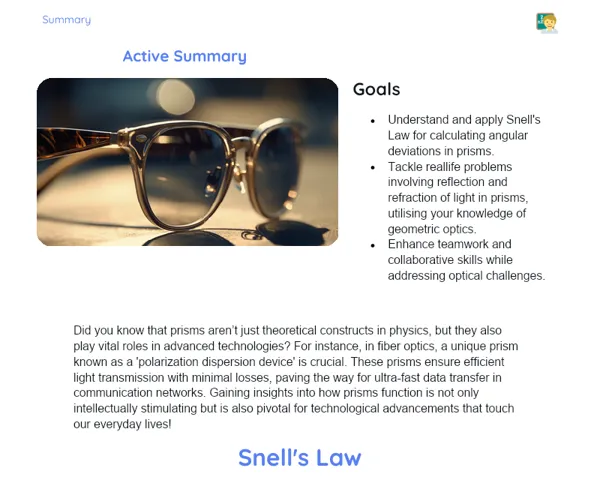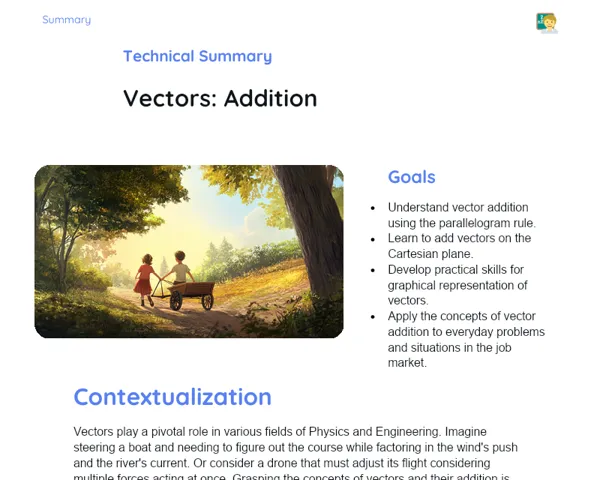Objectives
1. 🎯 Understand the concept of linear expansion and its relevance in everyday life.
2. 🎯 Develop the ability to tackle practical and theoretical problems related to the expansion of materials, especially iron bars.
Contextualization
Have you ever noticed the small gaps in bridges and railway tracks? These spaces are crucial for managing linear expansion! In warmer climates, materials expand, and these gaps prevent them from warping or breaking. This property is vital for constructing safe and long-lasting structures, and knowing how it works helps us avoid accidents and plan our cities and infrastructure more effectively.
Important Topics
Linear Expansion Formula
You can calculate the linear expansion of an object using the formula: ΔL = L₀ * α * ΔT, where ΔL is the change in length, L₀ is the original length, α is the material's coefficient of linear expansion, and ΔT represents the change in temperature. This coefficient differs for various materials and is crucial when designing structures to withstand temperature fluctuations.
-
The coefficient of linear expansion, α, is a unique property of each material, indicating how much its length changes per degree Celsius of temperature change.
-
The formula highlights that the length change is directly proportional to the initial length, the coefficient of linear expansion, and the temperature change—meaning longer materials expand more for the same temperature increase.
-
For engineers and architects, grasping and applying this formula is essential as it enables accurate calculations of expansions and contractions structures may face due to varying environmental conditions.
Practical Applications of Linear Expansion
Linear expansion is more than just a theory; it is a critical physical property with many real-world applications. In structures like bridges and railways, accounting for this expansion is essential to prevent failures. It is also utilized in technologies such as mercury thermometers, where the expansion of the liquid shows temperature changes.
-
In civil engineering, linear expansion is key in designing bridges, roads, and buildings, ensuring they can expand and contract safely under various weather conditions.
-
In industrial settings, like manufacturing railway tracks, managing linear expansion is crucial for the safe and efficient operation of transit systems.
-
In thermometry, the expansion of liquids or solids inside a capillary tube allows for measuring and reflecting temperature changes, based on the material's expansion properties.
Experiments on Linear Expansion
Conducting hands-on experiments enables students to visualize and grasp the concept of linear expansion effectively. Activities like heating metal rods and observing their growth in length provide a deeper insight into this phenomenon.
-
Simple experiments, such as heating a metal rod to measure its expansion, can be performed with affordable materials and effectively demonstrate linear expansion in action.
-
These experiments not only reinforce the theoretical formula but also help students observe physics at work, linking theory to real-life situations.
-
Noticing differences in expansion between various materials offers perspectives on how material properties impact expansion, emphasizing its importance in engineering and design.
Key Terms
-
Linear Expansion: The increase in the length of an object due to an increase in temperature. This is observed in many materials, particularly solids.
-
Coefficient of Linear Expansion (α): A measure of how much a solid's length changes for every degree Celsius of temperature change. This is a defining property of each material.
-
Mercury Thermometer: A device that measures temperature by utilizing the expansion and contraction of mercury in a capillary tube. This serves as a practical application of linear expansion in technology.
For Reflection
-
How can differences in the coefficient of linear expansion among various materials affect the design of structures that need to endure significant temperature variations?
-
Why is it essential to consider linear expansion when creating technologies like railway tracks and bridges, and how can this impact the safety and effectiveness of these structures?
-
How can understanding linear expansion assist in solving everyday issues or future career challenges in fields like engineering or architecture?
Important Conclusions
-
This review has helped us understand linear expansion and its applications in practical scenarios, from constructing bridges to the working principles of thermometers.
-
We recognized the significance of the coefficient of linear expansion, which varies from one material to another, impacting the design and safety of structures and devices.
-
The practical experiments we conducted allowed us to visualize and measure linear expansion, connecting theory to real-world applications.
To Exercise Knowledge
Select a metallic item in your house and try measuring its expansion on different days with varying temperatures. Note your observations. Research and put together a brief report on how linear expansion is applied in the aerospace sector. Create a model bridge using popsicle sticks that can expand and contract without breaking, simulating linear expansion.
Challenge
Design a simple device to measure the linear expansion of your window over a week. Document your observations and present them in a video or presentation to your class.
Study Tips
-
Regularly review the linear expansion formula and make flashcards to aid memorization.
-
Watch online videos featuring experiments on linear expansion to see how it’s done by other educators and students.
-
Engage with your peers or family about practical examples of linear expansion they encounter daily, such as in kitchens or at repair shops.



